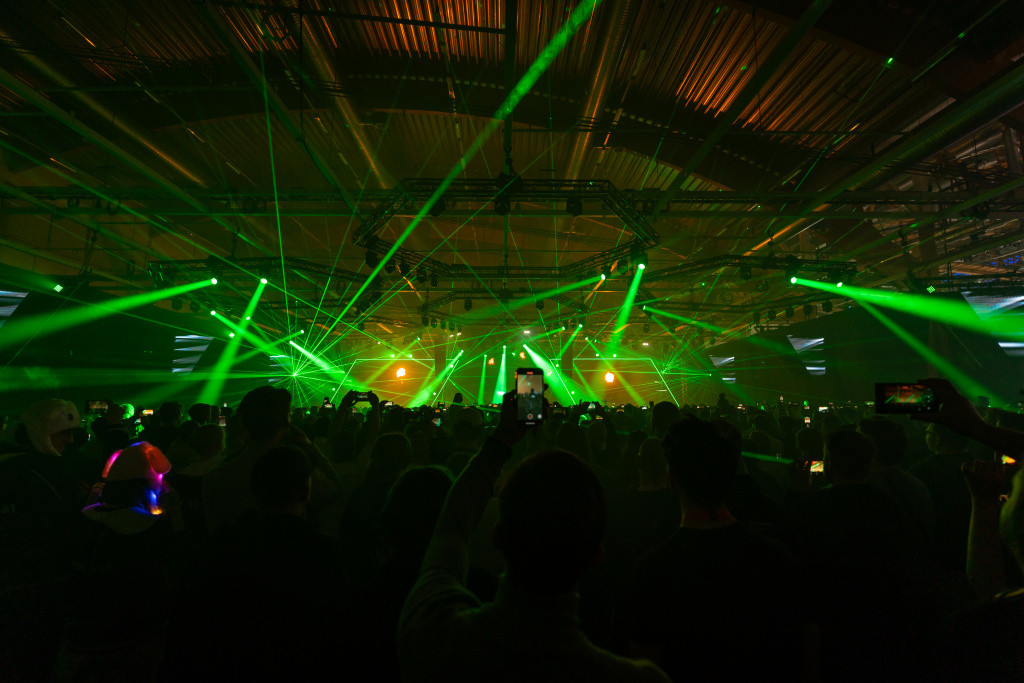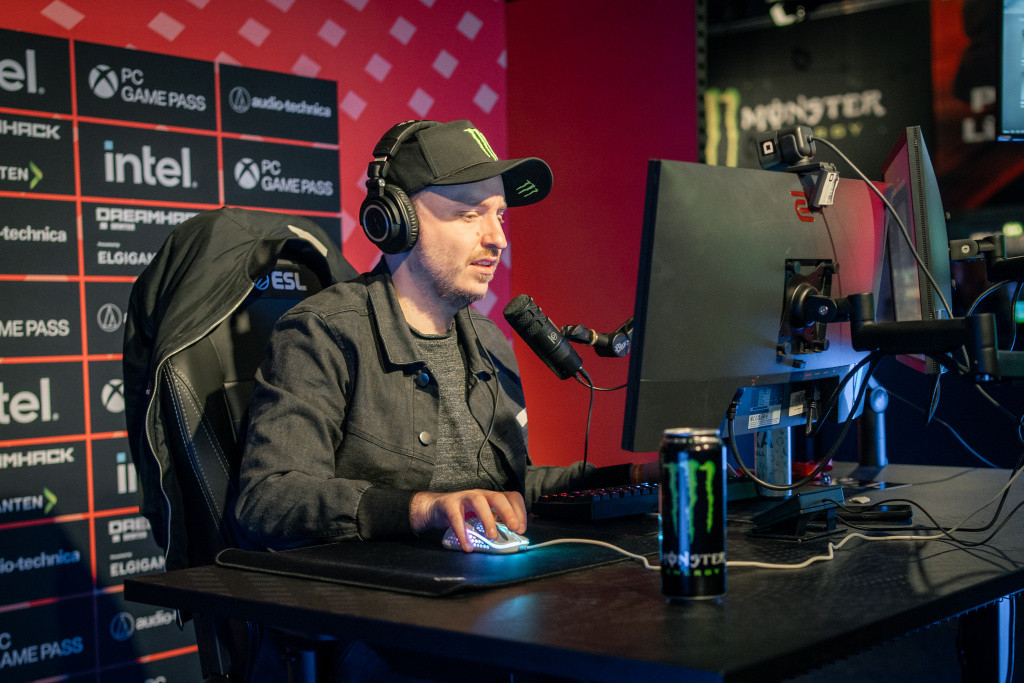In a small, picturesque city in the south of Sweden, thousands of gamers once again arrived in droves at Jönköping's Elmia Congress & Concert Hall to attend DreamHack Winter 2023. Here, players could catch high-stakes tournaments across Counter-Strike 2, Brawl Stars, NBA 2K, and more. But arguably one of the festival's biggest draws is its LAN party, the largest in the world.
There's a reason why DreamHack resonates with so many gamers around the world, and why so many are more than ready to brave the cold chill of Sweden to attend DreamHack Winter each year. We sat down with Shahin Zarrabi, ESL FACEIT's VP, Festivals to learn exactly what it is that makes DreamHack so special.

GINX: So, tell me a little bit about how DreamHack came about, and how it kind of turned into the event that it is today.
Zarrabi: Yeah, I mean, we come from very humble beginnings. In 1994, in a school cafeteria, a bunch of programmers got together in a really small town of Sweden. And they just wanted to show what they could do, to each other. They start competing in that. So almost like the first esports, but it was in programming. Since then, it's just grown and grown. And around 2000 they were too big to be in a school cafeteria, so they had to actually move in here [Jönköping]. And ever since we've been hosting DreamHacks in Jönköping in Sweden. And obviously, over the past few years, with the rise of esports, gaming, streaming, we've expanded globally. So now we're a global phenomenon. But we still have this old legacy festival here, where it all basically came about.
GINX: And how important is it for the community to still have events like DreamHack?
Zarrabi: I think it's pretty obvious that even if you are a hardcore game, or casual gamer, you want to see that you're part of something bigger, you want to see the faces of other people that share the same interest and passion as you do. And you see that on the faces of people walking around here, trying out new games, seeing each other or watching esports. So I think it's super important, especially in the time where it's shown that, you know, mental health issues among younger people is on the rise. And a lot of them feel more lonely than ever think gaming can be a real power of good there. And we can create a platform for people just to meet and connect with each other.

GINX: I feel like gaming gets this reputation for being like something that loners do, when really I think it's the most connected medium. Here, just looking around from where we're sat, you can see people just chatting, hanging out.
Zarrabi: You could ask yourself why people come in, for example, bring their own computers to do the same thing they do at home. They could have talked over voice chat that also shows the power of 'Hey, sure we like to sit at home and play as well'. But it's not a thing you do alone, never. You always play against other people, with other people. Of course, some people just want to play by themselves, that's fine, too. But people generally want to see other people in some way or another. It's an amazing community. And we just want to extract the best out of the, let's say, what is originally digital phenomenon and bring it into life.
GINX: But how does DreamHack continue to appeal to the newer generation? How does it keep bringing in new people and a bigger audience?
Zarrabi: Y'know, it's a question we ask ourselves as well. And I think a lot of it is, you know, following the trends within gaming. So for example, what games are popular among younger people. You know, you have classics like Counter Strike that everyone has played, but might not be as popular with with younger generations anymore. So you constantly need to check out should we do activations with Fortnite, Minecraft, Roblox to make sure that new generations also know about DreamHack.
But I think it's also about the, you know, the brand itself, the tone of voice, how we speak to people, and what generations what those younger generations value outside of gaming, what their lifestyles are. One of the key trends we've seen is that there's a lower affinity for corporate brands, and much higher interest in people, creators, ambassadors, things like that. And so that is why we've invested a lot in our Creator efforts with the Creator hub down in Hall D, inviting content creators, and maybe different from a lot of other conventions, let them do whatever they want. At our convention, nothing is paid, you don't need to pay $20 for an autograph, or anything like that. That's the kind of vibe we want to create for them.

GINX: It's interesting when you compare it to a lot of other conventions. I feel like there are a lot more unique booths and unique experiences that you don't really get in other places.
Zarrabi: Yeah, that's part of a value. I think a lot of conventions their business model is built on selling booths that sell stuff to someone who's already bought a ticket. We don't really want to do that. We see ourselves more of a festival. You don't go to a music festival and then pay for every stage that you're watching an act on, right?
GINX: So what's next for the festival. How is it going to continue to evolve?
Zarrabi: So we're obviously constantly looking at how each individual festival can get better. Next year we're looking at 'Okay, where in the world do we want to be?' Here in Sweden? We know that one of the highest video games exporting cities per capita in the world is Stockholm. And so for us, we've we've decided to to actually expand into Stockholm starting next year in November, and be closer to the games industry there. And also create a more international hub for partners, esports players, teams, and content creators to come and create something truly amazing, after having been to Tokyo for the first time this year Melbourne for the first time last year. It's a natural kind of progression of our strategy.
GINX: And how did you kind of create that same feeling of Dreamhack in all these different cities?
Zarrabi: It's all about having an internal culture of understanding that we're not forcing anything down someon. We always talk about how we are a platform, and the community actually takes us where we need to be. So we follow the trends, we build stages, creator hubs, expo areas, that can basically facilitate and help and boost those communities, those games, those brands that are relevant right now. So that we don't, you know, get stuck in doing the same thing over and over again. That's the main approach, we have to be able to create a dream. That also means that every DreamHack in the world is different, and has its own unique vibe created by the communities, that local locals that come to those shows.
GINX: Is there any highlight of the festival so far for you personally?
Zarrabi: I'm really happy to see a lot of our partners in the exhibition have really put in a lot of passion and resources into making their booths look great. That obviously adds a lot of the vibe that we have here. And then our Creator hub down in Hall D is amazing. With all the streamers being there. Anyone from having 100 viewers or 10,000 viewers at the same time can be there and and meet their fans and engage with them. It's beautiful to see.

 No ads, our video library,
No ads, our video library,

